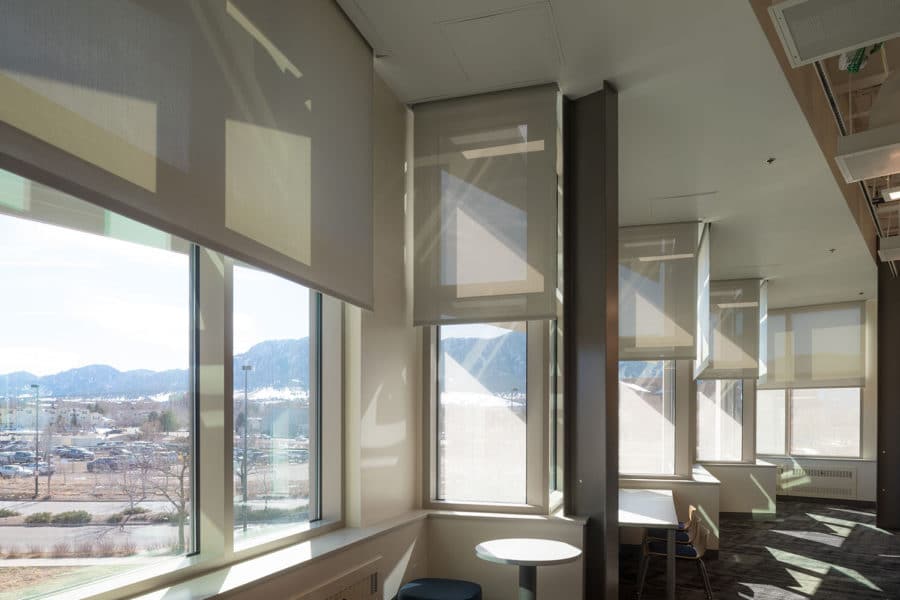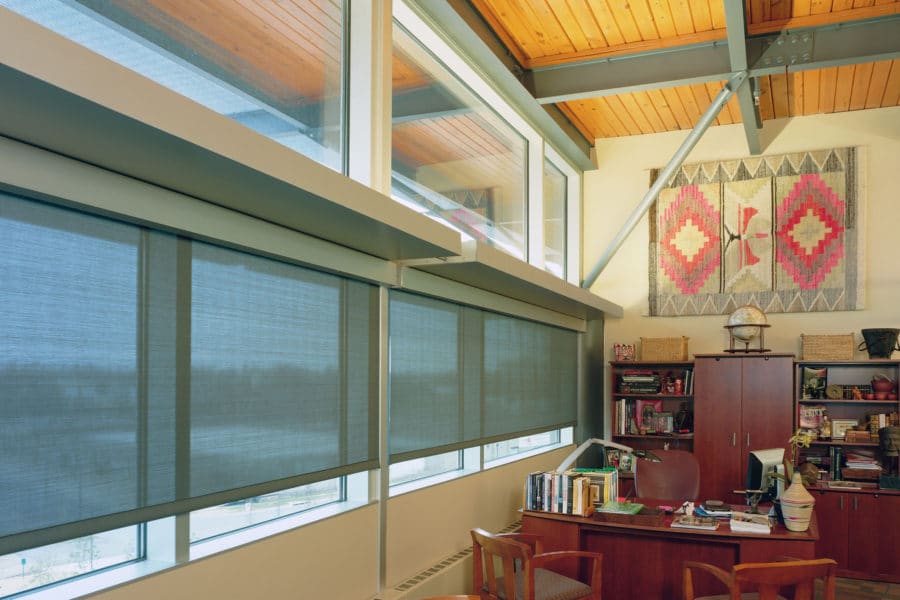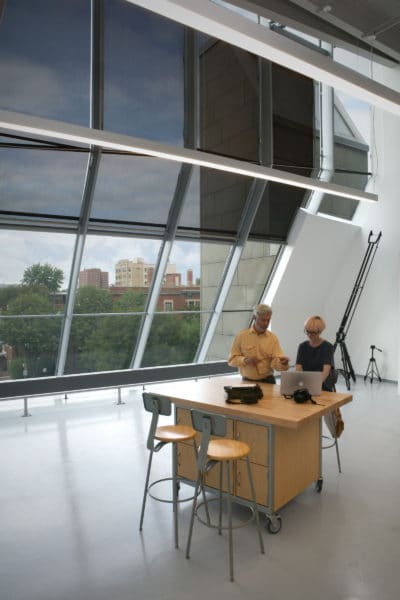Story at a glance:
- Daylighting is a great way to let the light into a building, but too much natural light can also lead to glare and solar heat gain.
- A successful daylighting strategy includes a motorized shading system to maximize light at the right time and place.
- Real-time sensor data and automated glare controls are two ways how to control daylight with a motorized shading system.
The positive benefits of daylighting on building occupants and operating costs are well-known throughout the design and construction world. Unfortunately, so are the negative side effects of glare and solar heat gain. So how can you control daylight in a space?
A recent article took aim at those negatives outlining the following interconnected ways to control daylight based on BOMI International’s high-performance sustainable building practices:
- Interior shading
- Interior sunshades
- Light shelves
- Horizontal blinds
However, while these overlapping solutions do in fact play key roles in maximizing daylighting strategy, they are only part of the solution.
A truly successful shading design depends on the ability to deploy at the right time in the right places. For that you need motorization, controls, and possibly automation.
Here are four ways how to control daylight successfully with motorized shading systems.
Create zones for user input.
Conditions change. The sun may appear from behind clouds, turning grey-but-comfortable office areas into a hotbox.
With solutions like Draper IntelliFlex® I/O that have single and dual zone wall switches, user input can return one or more zones of a shading system to providing the necessary level of comfort. Once conditions have improved, the switches can be used to readjust the shades as needed. Eventually, an automation system can return shades to their proper deployment.
Add responses to real-time sensor data.
Although this isn’t the same thing as automation, it can accomplish a similar outcome. This reactive approach mimics automation with brightness, wind, and precipitation sensors, as well as pyranometers, that react to current local conditions and adjust shades accordingly.
Extend the reach of your automation system.

Photo by Kyle Zirkus
What if you recently added automated shading systems to some areas of a building or campus but already had existing, nonintelligent shades in other areas? You may not want to invest in all new motors in those areas, but maybe you’d like the existing shades to fit in with a newly automated intelligent system
Let’s take the IntelliFlex I/O shading system for instance. One and 4 motor external motor controllers connect standard four-wire motors to an IntelliFlex I/O system so that even when networked, they can be independently operated and configured to respond to wall switches, RF remotes, and signals from third party systems. An on-board contact closure interface can be used as a local control for both networked and stand-alone operation.
Choose your level of automated glare control.

Photo courtesy of Draper, Inc.
Some areas such as atriums, reception and waiting areas, wellness centers, and school gathering areas require a more automated solution. This approach is also helpful when shades on an entire floor of an office or mixed-use building need to be automated.
Motorized shading systems with automated glare control use a model of the building’s orientation and geographic location to calculate where shades should be and adjusts them accordingly.
When shades throughout multiple floors or an entire building need to be controlled, a more complete automation system is required. For whole building control, Draper, for instance, offers the Central Network Controller (CNC), which uses an algorithm-based software to determine the sun’s location in the sky. By using a formula that includes building coordinates and time of day/year, the software automatically moves the shades to a position that is based on the parameters set up for the solar depth penetration for each project.
The CNC acts as a router between control and IP networks. It allows communication between networks and IP integration with other systems for whole building automation.





